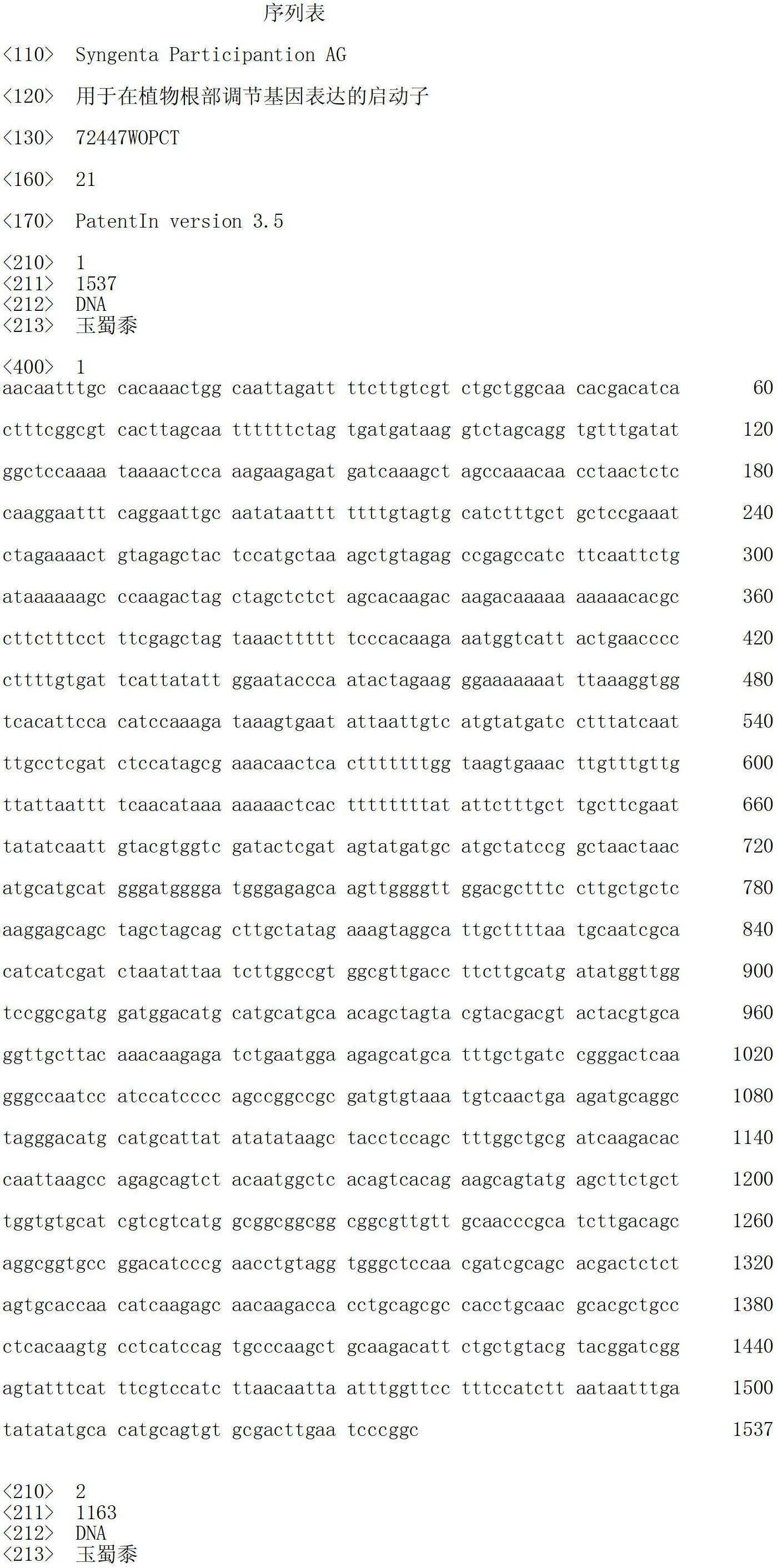Promoter for regulation of gene expression in plant roots
A promoter and plant technology, applied to the regulation of gene expression in plants, the field of gene expression regulation, can solve the problem of not being able to provide the root specificity of the selected gene
- Summary
- Abstract
- Description
- Claims
- Application Information
AI Technical Summary
Problems solved by technology
Method used
Image
Examples
example 1
[0141] Example 1: Construction of a root cap-specific expression cassette
[0142] entry carrier
[0143] The first step in the construction of the expression cassette is to clone the promoter into an entry vector. PCR primers were designed to amplify the promoter and terminator from maize line B73. These isolated nucleic acid sequences were TOPO cloned and sequenced. The promoter corresponding to this sequence was named the maize root shoot specific 1 promoter or ZmRCP1-1 promoter. The terminator corresponding to this sequence was named maize root shoot specific 1 terminator or ZmRCP1-terminator.
[0144] The ZmRCP1-1 promoter was amplified using maize genomic DNA (B73) as template in a 50 μL Extensor (AB Genetics) DNA polymerase reaction containing: 10 μg gDNA, 5 μL 10X Extensor buffer 1, 2.0 μL 10 mM dNTP mix , 1.0 μL of 20 μM prRCP Forward - SEQ ID NO: 9 (5'GCTAGCCTCGAGGGACCCAACAATTTGCCACAAACTGG-3'), 1.0 μL of 20 μM RCP P2 Reverse - SEQ ID NO: 10 (5'-GCTAGCGGATCCGGCGCC...
example 2
[0157] Example 2: Construction of a root cap-specific expression cassette
[0158] entry carrier
[0159] The first step in the construction of the expression cassette is to clone the promoter into an entry vector. PCR primers were designed to amplify the promoter from maize line B73. These isolated nucleic acid sequences were TOPO cloned and sequenced. The promoter corresponding to this sequence was named as maize root shoot specific 1-2 promoter or ZmRCP1-2 promoter.
[0160] The vector is PCR4-Topo, which contains a putative maize root cap specific promoter prZmRCP1-2. prZmRCP1-2 was amplified by PCR from the genomic DNA of maize B73 using primers AG971f-SEQ ID NO: 11 (CTCGAGGGACCCAACAATTTGCCACAAACTGG) and AG972r-SEQ ID NO: 12 (GGATCCTGTAGACTGCTCTGGCTTAA), then cloned into PCR4-Topo and Sequencing. The resulting vector was pSYN15670 (SEQ ID NO: 21).
example 3
[0161] Example 3: Expression of GUS in Stably Transformed Maize Directed by a Root-Specific Promoter
[0162] Maize plants were transformed with an Agrobacterium vector comprising the ZmRCP1 promoter and terminator of the present invention operably linked to the GUS coding sequence. The Agrobacterium vector further includes a ubiquitin promoter and NOS terminator operably linked to the PMI (phosphomannose isomerase) coding sequence.
[0163] GUS activity in stably transformed maize was measured by visual assay. GUS activity was characterized as high (+++), moderate (++), low (+), or none (-), and the data for 25 low copy transgenic maize plants per promoter construct were averaged. The results shown in Table 1 demonstrate that GUS activity is specifically restricted to roots in transgenic plants comprising an expression cassette comprising a promoter of the present invention. This expression was further defined as sequestration into the root cap.
[0164] Table 1. Summary G...
PUM
 Login to View More
Login to View More Abstract
Description
Claims
Application Information
 Login to View More
Login to View More - R&D
- Intellectual Property
- Life Sciences
- Materials
- Tech Scout
- Unparalleled Data Quality
- Higher Quality Content
- 60% Fewer Hallucinations
Browse by: Latest US Patents, China's latest patents, Technical Efficacy Thesaurus, Application Domain, Technology Topic, Popular Technical Reports.
© 2025 PatSnap. All rights reserved.Legal|Privacy policy|Modern Slavery Act Transparency Statement|Sitemap|About US| Contact US: help@patsnap.com



